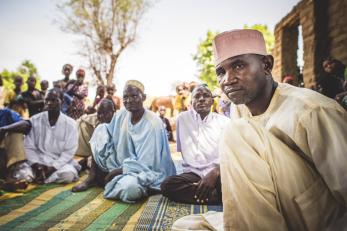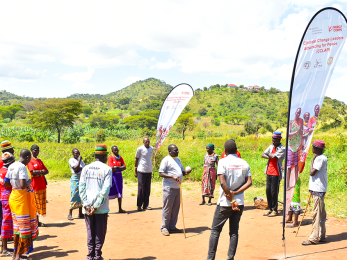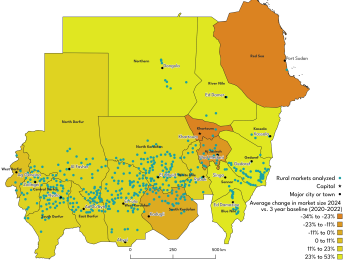Mobilising Communities to Build Social Cohesion and Reduce Vulnerability to Violent Extremism
Evidence from a Peacebuilding Programme in Niger

Read a short overview of findings and recommendations (English) (French) ▸
Read the full report (English) ▸
Methodological appendix (English) ▸
Improving social cohesion has become a central focus of policies and programmes aimed at preventing violence and building peace. In recent years, donors and policymakers have further posited that building cohesion between individuals and groups can help alleviate the grievances and social marginalisation that motivate people to engage in violent extremism. Yet there is limited evidence to support these claims, including a relative dearth of rigorous evaluations of social cohesion programmes on violence-related outcomes.
To fill this gap, this report examines the impact of Mercy Corps’ USAID-funded Preventing Violent Extremism Actions through increased Social Cohesion Efforts (PEACE) programme in the Tillabéri region of Niger. Extremist groups have escalated attacks against both civilians and security forces in the region – which straddles the borderlands of Niger, Mali, and Burkina Faso – exploiting and exacerbating local drivers of violence. The PEACE programme, which lasted from 2019 to 2021, used Mercy Corps’ signature approach to community mobilisation and participatory planning, CATALYSE, to support communities in identifying local issues and implementing projects together that addressed shared needs. This provided opportunities to strengthen social cohesion along ethnic, citizen-government, and other lines of division in order to make it more difficult for violent extremist organisations to exploit identity differences and feelings of marginalisation to recruit supporters.
Drawing on surveys with more than 1,800 respondents before, during, and after the programme, Mercy Corps tested the impact of the programme as a whole – along with the relative impact of different types of activities – on multiple indicators of social cohesion and violent extremism. To help triangulate and explain these results, we also analysed qualitative data collected by the programme.
We found that the programme had a positive effect on several important components of social cohesion. The more PEACE activities implemented in a village, and the more respondents participated in them, the more respondents’ trust in their communities improved. Yet when it came to improving trust in other groups, infrastructure projects and cultural activities had a positive and statistically significant impact, but mediation and livelihoods-related interventions did not. The programme also made modest improvements in relations between citizens and governing actors, although it did not improve perceptions of women’s and youth’s roles in the community. The findings suggest that the most effective interventions in Tillabéri were those that engaged more people, required greater coordination between different groups, and centred around addressing shared needs and participating in meaningful traditions.
Despite evidence that the PEACE programme helped improve social cohesion, its impact on reducing vulnerability to violent extremism was mixed. PEACE had a statistically significant effect on reducing support for political violence. Yet it had no effect on reducing support for violent groups, including the Islamic State in the Greater Sahara (ISGS). We also did not find a direct link between improvements in social cohesion and changes in support for violence or for armed groups.
While research by Mercy Corps and others indicates that strengthening social cohesion is important for preventing violence and promoting peace, this study indicates that more evidence is needed on the role that social cohesion plays in reducing vulnerability to violent extremism in contexts like Niger. It also suggests that peacebuilding and countering violent extremism (CVE) programmes may need to address other factors, in addition to social cohesion, to mitigate VE risks.

